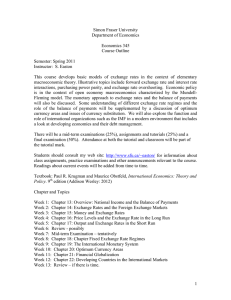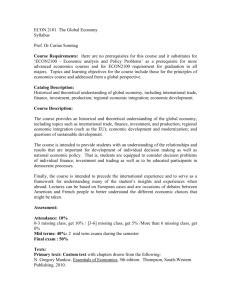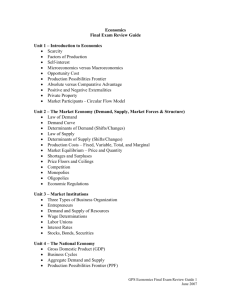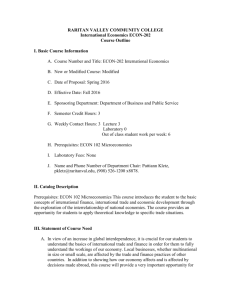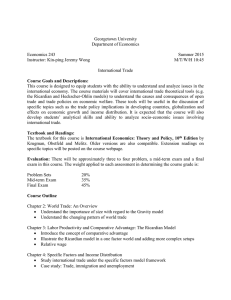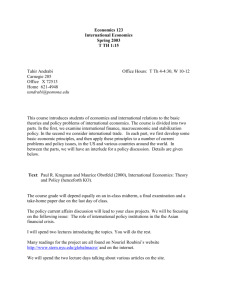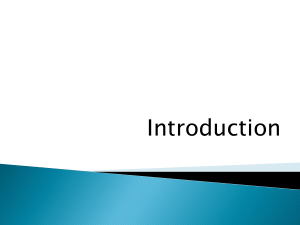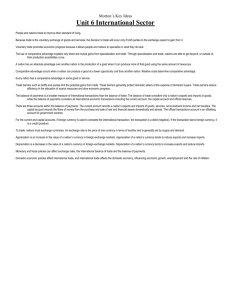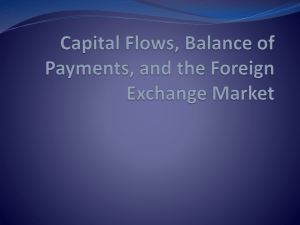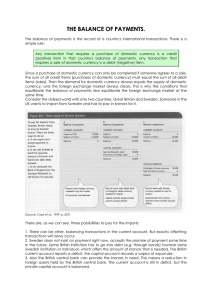International economics (bachelor degree)
advertisement
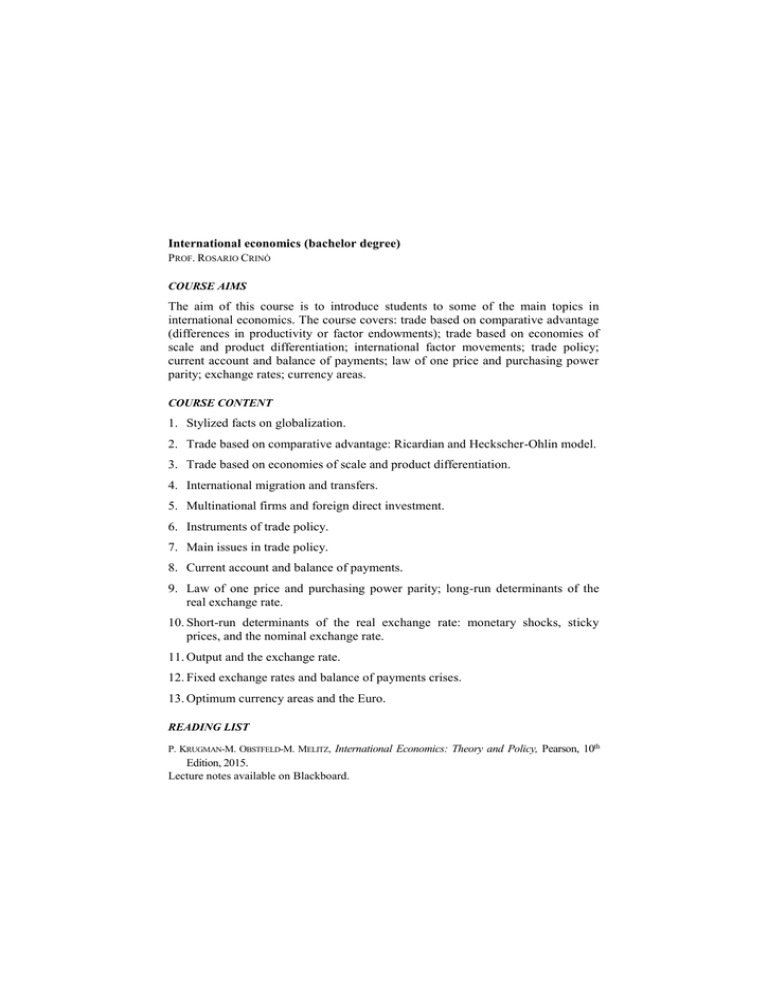
International economics (bachelor degree) PROF. ROSARIO CRINÒ COURSE AIMS The aim of this course is to introduce students to some of the main topics in international economics. The course covers: trade based on comparative advantage (differences in productivity or factor endowments); trade based on economies of scale and product differentiation; international factor movements; trade policy; current account and balance of payments; law of one price and purchasing power parity; exchange rates; currency areas. COURSE CONTENT 1. Stylized facts on globalization. 2. Trade based on comparative advantage: Ricardian and Heckscher-Ohlin model. 3. Trade based on economies of scale and product differentiation. 4. International migration and transfers. 5. Multinational firms and foreign direct investment. 6. Instruments of trade policy. 7. Main issues in trade policy. 8. Current account and balance of payments. 9. Law of one price and purchasing power parity; long-run determinants of the real exchange rate. 10. Short-run determinants of the real exchange rate: monetary shocks, sticky prices, and the nominal exchange rate. 11. Output and the exchange rate. 12. Fixed exchange rates and balance of payments crises. 13. Optimum currency areas and the Euro. READING LIST P. KRUGMAN-M. OBSTFELD-M. MELITZ, International Economics: Theory and Policy, Pearson, 10th Edition, 2015. Lecture notes available on Blackboard. TEACHING METHOD Lectures. ASSESSMENT METHOD Mid-term exam (90 minutes, written test with open questions) and final exam (90 minutes, written test with open questions). NOTES Students are expected to have taken Microeconomics and Macroeconomics.
